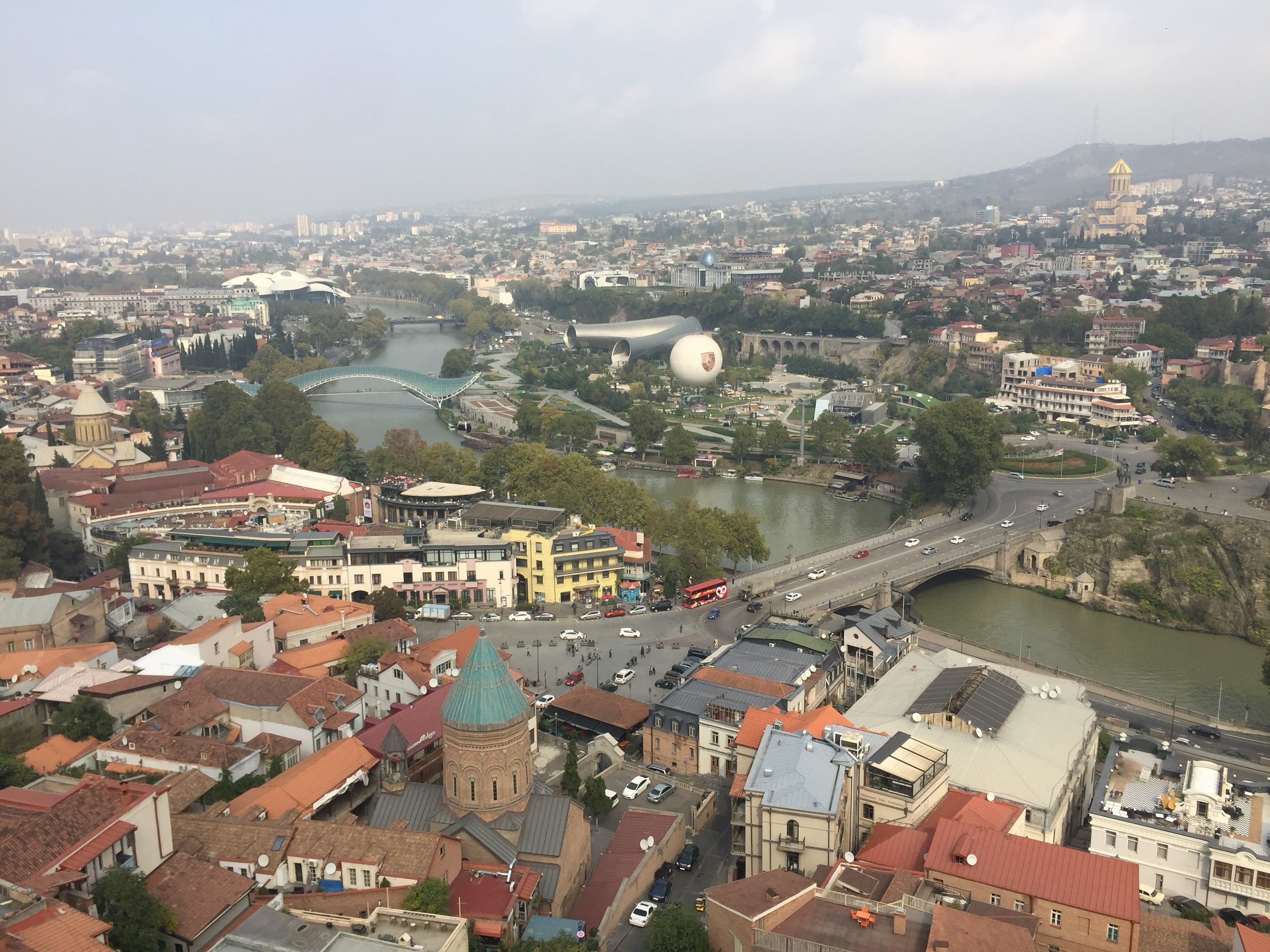Tbilisi, the vibrant capital of Georgia, is a city that beautifully intertwines history, culture, and modernity. Nestled in the heart of the Caucasus region, it boasts a rich tapestry of architectural styles, breathtaking landscapes, and an ever-evolving society that welcomes both tourists and locals alike. As one explores its charming streets, the essence of Tbilisi unfolds through its diverse neighborhoods, each telling a unique story.
The Old Town, or “Dzveli Tbilisi,” is the beating heart of the city, characterized by narrow, winding alleys lined with colorful wooden balconies. This area serves as a profound reminder of the city’s storied past, influenced by various cultures including Persian, Ottoman, and Soviet. Notable landmarks such as the Narikala Fortress, which dates back to the 4th century, stand tall above the city, offering panoramic views of Tbilisi and the Kura River. A cable car ride to the fortress provides a thrilling experience, showcasing the city’s striking contrasts: ancient structures interspersed with modern developments.
Another gem of Tbilisi’s landscape is the sulfur baths located in the Abanotubani district. These historic baths, with their distinctive domes, have been a part of Tbilisi’s culture for centuries. The therapeutic properties of the mineral-rich waters make them a sought-after destination for relaxation. Visitors can immerse themselves in a traditional bath experience, often accompanied by a massage, while absorbing the local customs and warmth of Georgian hospitality.
As one delves deeper into Tbilisi, the influence of art and culture becomes apparent. The city is alive with galleries, theaters, and street art that reflect contemporary issues and celebrate Georgia’s heritage. The Georgian National Museum houses an impressive collection of artifacts that chronicle the nation's history, from ancient archaeological finds to modern art pieces. Meanwhile, the opera and ballet theater stands as a testament to Tbilisi’s rich artistic traditions, often hosting world-class performances.
Culinary experiences in Tbilisi are not to be overlooked. Georgian cuisine is a delightful blend of flavors that has gained international recognition. Traditional dishes such as khinkali (dumplings) and khachapuri (cheese-filled bread) are must-tries for anyone visiting the city. The bustling markets offer fresh produce, spices, and homemade goods, reflecting the region's agricultural bounty. Pairing these dishes with a glass of local wine, known as one of the oldest in the world, enhances the dining experience and showcases the country’s deep-rooted viticulture.
The modern side of Tbilisi is equally compelling, characterized by innovative architecture and dynamic nightlife. The Bridge of Peace, a pedestrian bridge made of glass and steel, connects the Old Town to the new district of Rike Park, symbolizing the blend of tradition and modernity that defines the city. As day turns to night, the lively streets come alive with bars, clubs, and live music venues that cater to diverse tastes, making Tbilisi a hub for social interaction and entertainment.
Tbilisi is a city that invites exploration and discovery. Its charming streets, historical sites, and rich cultural offerings create an unforgettable experience for visitors. Whether wandering through the cobblestone lanes of the Old Town, soaking in the sulfur baths, or enjoying the culinary delights, Tbilisi captures the heart of all who visit. The harmonious coexistence of history and modernity ensures that this Georgian capital remains a captivating destination for travelers from around the world.




